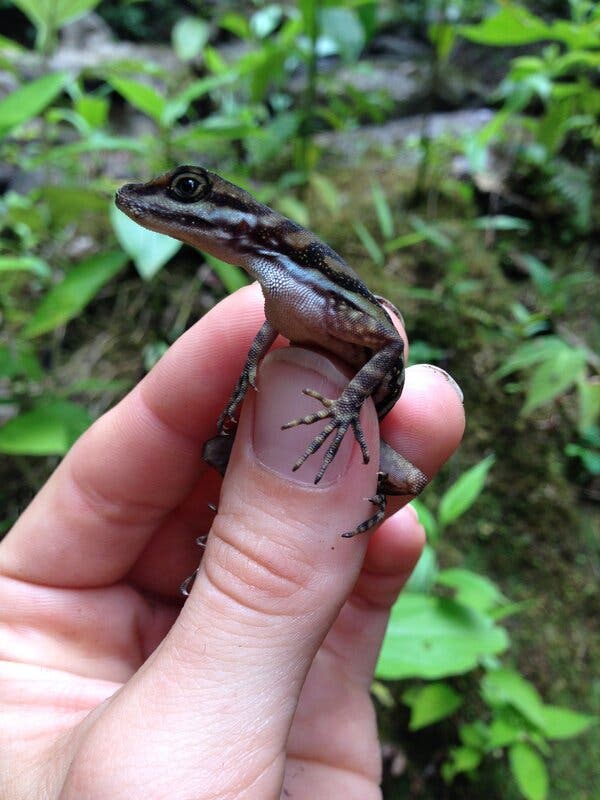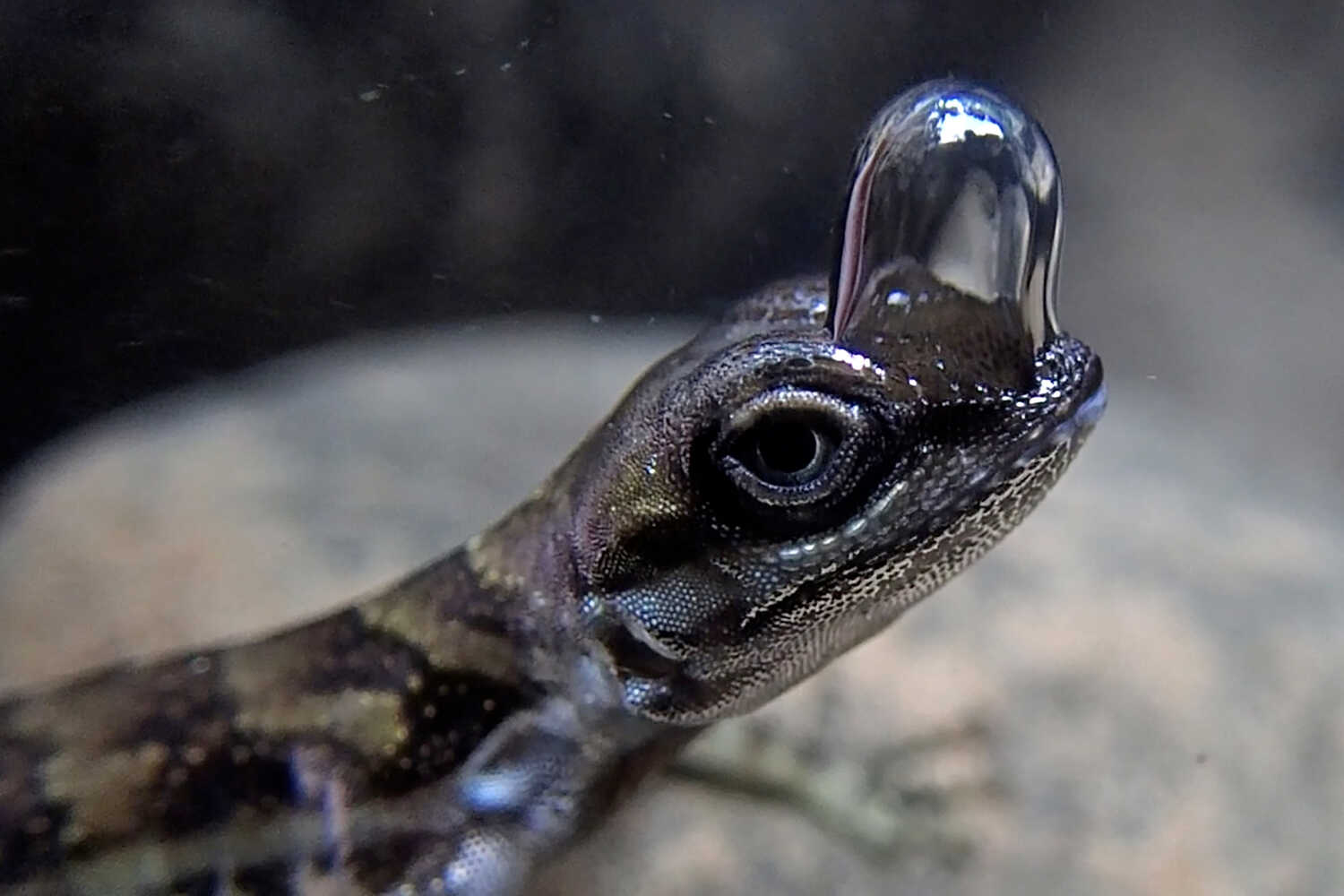Almost every animal in the rainforest enjoys snacking on water anoles, but slippery skin and an ability to carry an air bubble underwater help them survive.
Water anoles, semiaquatic lizards that are shorter than a pencil, are highly sought-after snacks among predators in Costa Rican and Panamanian rainforests. Preyed upon by snakes, birds, small mammals and larger lizards, the anoles hide in vegetation along the rocky banks of streams. Faced with danger, a lizard dives into the water and produces a bubble behind its nostrils that allows it to remain submerged for up to 20 minutes, and perhaps much longer.
Lindsey Swierk, a behavioral ecologist at Binghamton University in New York, worked with Luke Mahler and Chris Boccia at the University of Toronto and other researchers to document the scuba-diving prowess of water anoles. But the purpose of their underwater antics was unclear.
Dr. Swierk wasn’t sure whether the adaptation was a function of survival or just a strange side effect of their hydrophobic skin. While water can’t stick to a lizard’s skin, its composition allows air bubbles to form around parts of its body.
But in findings published Wednesday in the journal Biology Letters, Dr. Swierk found that the bubble allowed this little lizard to stay underwater significantly longer than it otherwise could, supporting the hypothesis that it evolved this ability to evade hungry predators.

Using an underwater camera, Dr. Swierk first viewed the bubble appearing and disappearing atop the anole’s snout. The bubble, which forms mostly as a result of air stored in the lizard’s lungs but also from air pockets on its water-repellent skin, centers over the snout so the animal can rebreathe air underwater. “There are these anchor points on the head where the bubbles seem to be attaching,” Dr. Swierk said.
